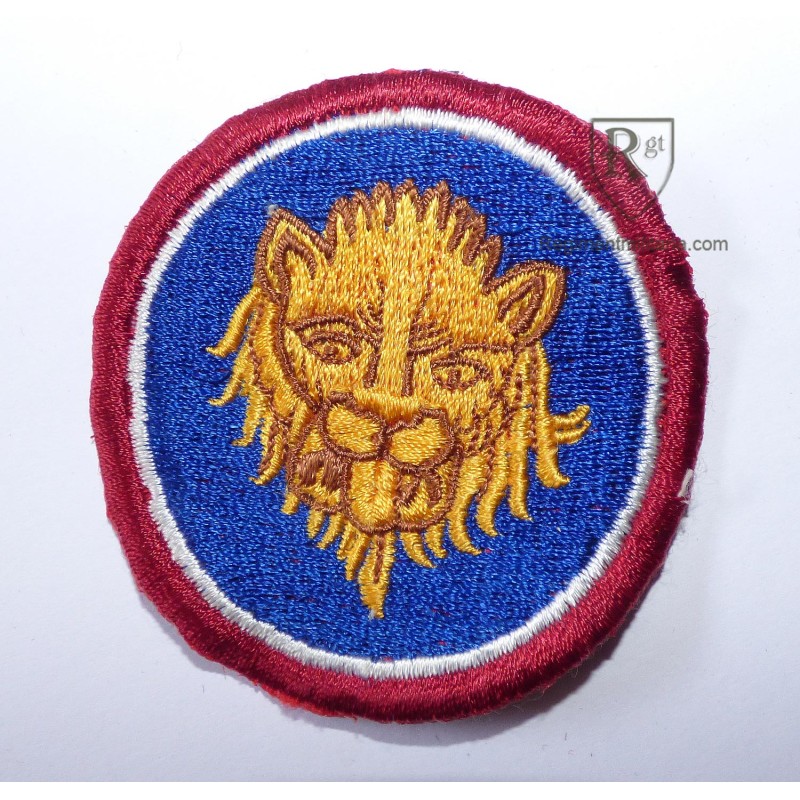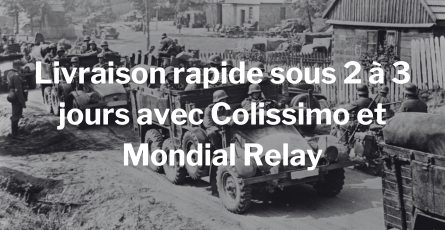

Banner

Banner




106th Infantry Division Patch, GOLD LION VARIETY.
 Garanties sécurité
Garanties sécurité
(à modifier dans le module "Réassurance")
 Politique de livraison
Politique de livraison
(à modifier dans le module "Réassurance")
 Politique retours
Politique retours
(à modifier dans le module "Réassurance")
106th Infantry Division Patch. original, WW2.
The 106th Infantry Division's Headquarters and Headquarters Company was constituted on paper on 5 May 1942, five months after the United States entered World War II. It was actually activated on 15 March 1943 at Fort Jackson, South Carolina, with a cadre from the 80th Infantry Division. Following Basic and Advanced Infantry Training, the Division moved on 28 March 1944 to Tennessee to participate in the Second Army No. 5 Maneuvers.
The 106th Infantry Division relieved the 2nd Infantry Division in the Schnee Eifel on 11 December 1944, with its 424th Infantry Regiment was sent to Winterspelt. Prior to the battle, according to the US Army Service Manual, one division should be responsible for no more than 5 miles (8.0 km) of front. On the eve of the battle, the 106th, along with the attached 14th Cavalry Group was covering a front of at least 21 miles (34 km).
In the Ardennes-Alsace Campaign, the Germans attacked the 106th on 16 December 1944. The division's 422nd and 423rd Infantry Regiments were encircled and cut off by a junction of enemy forces in the vicinity of Schönberg. They regrouped for a counterattack, but were blocked by the enemy. The two regiments surrendered on 19 December. The Germans gained 6,000 prisoners in one of the largest mass surrenders in American military history. Nearly 50% of the division's strength was brushed aside[vague] in the first days of the Battle of the Bulge.
The remnants of the division were reinforced by the 112th Infantry Regiment of the 28th Infantry Division and withdrew over the Our River and joined other units at Saint Vith. Along with the city of Bastogne to the south, St. Vith was a road and rail junction city considered vital to the German goal of breaking through Allied lines to split American and British forces and reach the Belgian port city of Antwerp. A scratch force of 106th Division personnel, in particular the division's 81st Engineer Combat Battalion, was organized and led by the 81st's 28-year-old commanding officer, Lt. Col. Thomas Riggs, in a five-day holding action (17–21 December) on a thin ridge line a mile outside St. Vith, against German forces vastly superior in numbers and armament (only a few hundred green Americans versus many thousands of veteran Germans). For this action, the 81st Engineer Combat Battalion was later awarded the Distinguished Unit Citation for gallantry. The defense of St. Vith by the 106th has been credited with ruining the German timetable for reaching Antwerp, hampering the Bulge offensive for the Germans.
The 81st and other units, including 168th Engineer Combat Battalion, pulled back from St. Vith on 21 December, under constant enemy fire, and withdrew over the Saint River at Vielsalm on 23 December. The following day, the 424th Regiment, attached to the 7th Armored Division, fought a delaying action at Manhay until ordered to an assembly area. From 25 December to 9 January 1945, the division received reinforcements and supplies at Anthisnes, Belgium, and returned to the struggle, securing objectives along the Ennal-Logbierme line on 15 January after heavy fighting. After being pinched out by advancing divisions, the 106th assembled at Stavelot on 18 January for rehabilitation and training. It moved to the vicinity of Hunningen on 7 February for defensive patrols and training.
In March, the 424th advanced along the high ground between Berk and the Simmer River and was relieved on 7 March. A period of training and security patrolling along the Rhine River followed, until 15 March, when the division moved to St. Quentin for rehabilitation and the reconstruction of lost units.
The division was reconstituted on 16 March when the 3rd Infantry Regiment (the Old Guard) and the 159th Infantry Regiment were attached to replace the two lost regiments. The division then moved back to Germany on 25 April, where, for the remainder of its stay in Europe, the 106th handled POW enclosures and engaged in occupational duties.
In the meantime, the 422nd Infantry Regiment and the 423rd Infantry Regiment were reconstituted from replacements in France on 15 April, were attached to the 66th Infantry Division in training status, and were still in this status when the Germans surrendered on 8 May 1945.
Reference: F1E460
Reference: ALG178
Reference: U2E763

106th Infantry Division Patch, GOLD LION VARIETY.
check_circle
check_circle